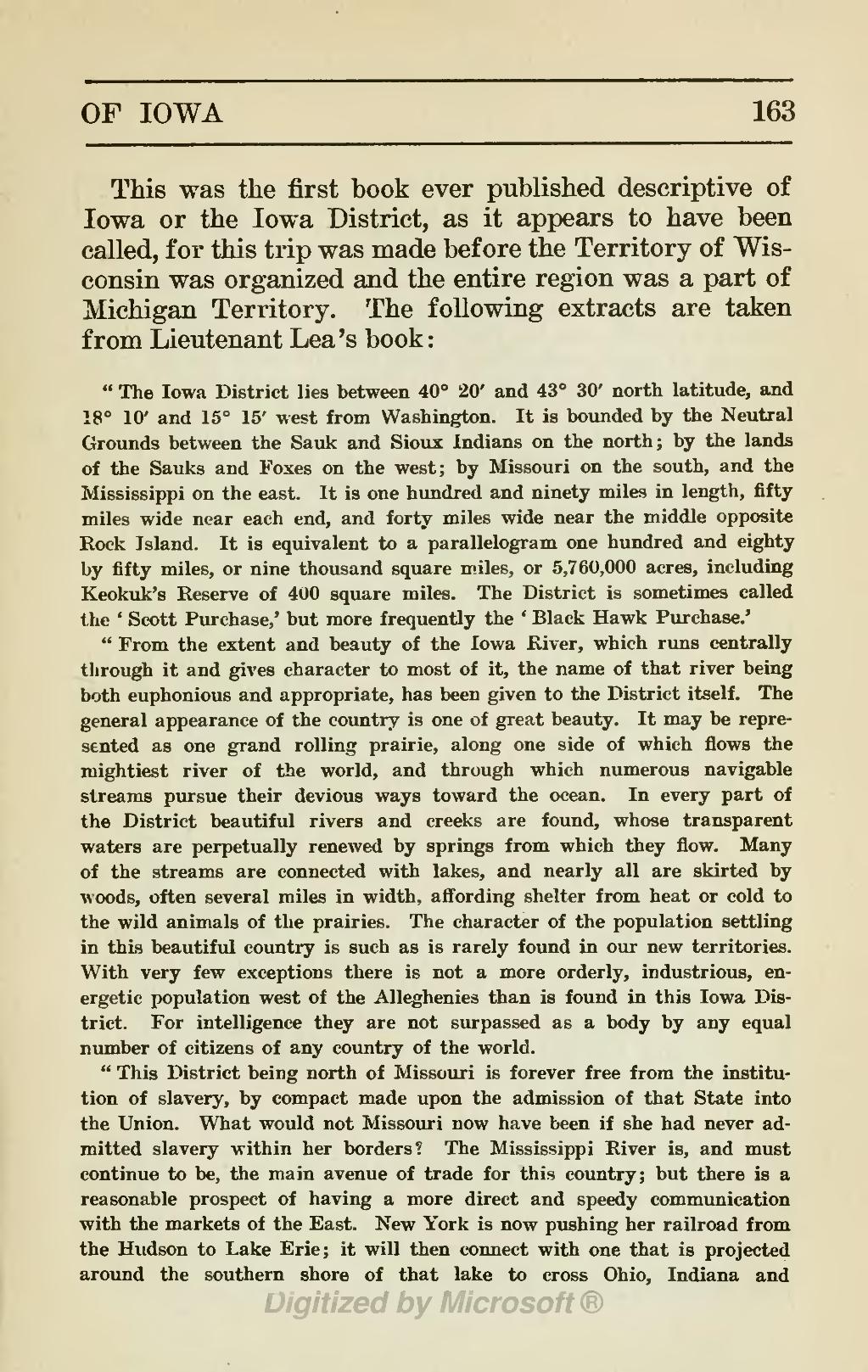| OF IOWA | 163 |
This was the first book ever published descriptive of Iowa or the Iowa District, as it appears to have been called, for this trip was made before the Territory of Wisconsin was organized and the entire region was a part of Michigan Territory. The following extracts are taken from Lieutenant Lea's book:
“The Iowa District lies between 40° 20' and 43° 30' north latitude, and 18° 10' and 15° 15' west from Washington. It is bounded by the Neutral Grounds between the Sauk and Sioux Indians on the north; by the lands of the Sauks and Foxes on the west; by Missouri on the south, and the Mississippi on the east. It is one hundred and ninety miles in length, fifty miles wide near each end, and forty miles wide near the middle opposite Rock Island. It is equivalent to a parallelogram one hundred and eighty by fifty miles, or nine thousand square miles, or 5,760,000 acres, including Keokuk's Reserve of 400 square miles. The District is sometimes called the 'Scott Purchase,' but more frequently the 'Black Hawk Purchase.'
“From the extent and beauty of the Iowa River, which runs centrally through it and gives character to most of it, the name of that river being both euphonious and appropriate, has been given to the District itself. The general appearance of the country is one of great beauty. It may be represented as one grand rolling prairie, along one side of which flows the mightiest river of the world, and through which numerous navigable streams pursue their devious ways toward the ocean. In every part of the District beautiful rivers and creeks are found, whose transparent waters are perpetually renewed by springs from which they flow. Many of the streams are connected with lakes, and nearly all are skirted by woods, often several miles in width, affording shelter from heat or cold to the wild animals of the prairies. The character of the population settling in this beautiful country is such as is rarely found in our new territories. With very few exceptions there is not a more orderly, industrious, energetic population west of the Alleghenies than is found in this Iowa District. For intelligence they are not surpassed as a body by any equal number of citizens of any country of the world.
“This District being north of Missouri is forever free from the institution of slavery, by compact made upon the admission of that State into the Union. What would not Missouri now have been if she had never admitted slavery within her borders? The Mississippi River is, and must continue to be, the main avenue of trade for this country; but there is a reasonable prospect of having a more direct and speedy communication with the markets of the East. New York is now pushing her railroad from the Hudson to Lake Erie; it will then connect with one that is projected around the southern shore of that lake to cross Ohio, Indiana and